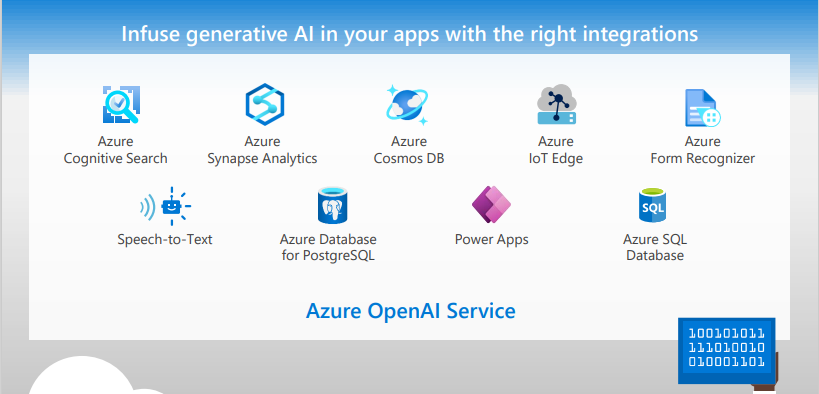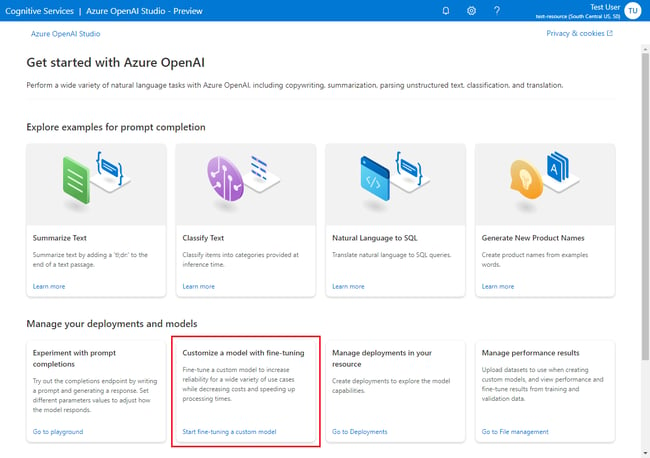Large language models (LLM) have significantly advanced natural language processing (NLP) tasks, and the ability to fine-tune them further enhances their capabilities. Azure OpenAI provides a powerful platform for fine-tuning custom language models, offering numerous benefits to researchers, developers, and organizations.
In this blog post, we’ll explain our process of fine-tuning a custom language model using Azure OpenAI and delve into the advantages it brings to the table.

Figure 1: Excerpt from Microsoft infographic about Azure OpenAI.
Why is Fine-tuning of LLMs Performed?
Fine-tuning a large language model is a process of training on a specific dataset to improve the performance of the LLM on a particular task. This can be done by providing the large language model with a set of labeled examples of the task you want it to perform. The LLM will then learn to associate the labels with the text in the examples and use this knowledge to generate text that is more likely to be labeled correctly.
Steps Involved in Fine-tuning a Custom LLM
- Prepare the training data
The training data should be a set of labeled examples of the task you want the large language models to perform. The labels should be as specific as possible, and the examples should be representative of the types of text that the LLM will be asked to generate. - Select a base model
The base model is the LLM that you will be finetuning. There are several different base models available, and the best choice for you will depend on the task you want the LLM to perform. - Upload the training data
Once you have prepared the training data, you need to upload it to Azure OpenAI. - Train the LLM
Azure OpenAI will train the LLM on the training data you have uploaded. This process can take several hours or even days, depending on the size of the training data and the complexity of the task. - Deploy the LLM
Once the LLM has been trained, you can deploy it to Azure OpenAI. This will allow you to use the LLM to generate text.
 Figure 2: Screenshot of OpenAI menu from Microsoft Learn.
Figure 2: Screenshot of OpenAI menu from Microsoft Learn.
Benefits of Finetuning a Custom LLM
Here are some of the benefits of finetuning a custom LLM:
- Improved performance:
Finetuning can significantly improve the performance of an LLM on a particular task. This is because the LLM is being trained on data that is specific to the task, which allows it to learn the patterns that are associated with that task
. - Increased flexibility:
Finetuning allows you to customize the LLM to your specific needs. This means that you can finetune the LLM to perform a particular task, or to generate text that is specific to your domain. - Reduced costs:
Finetuning can help to reduce the costs of using an LLM. This is because you can finetune the LLM on a smaller dataset, which can save you money on the cost of training.
Fine-tuning a custom language model using Azure OpenAI empowers researchers and developers to unlock the full potential of NLP. By following the outlined steps, you can optimize a language model for specific tasks or domains, providing domain-specific expertise, enhanced performance, and customized applications. Azure OpenAI's robust infrastructure and comprehensive tools make the fine-tuning process more accessible and efficient.



